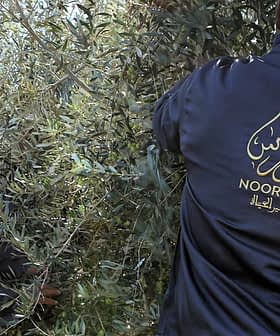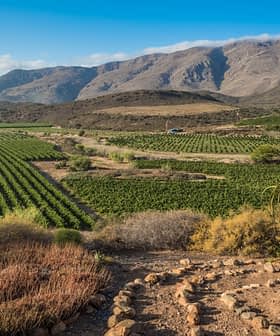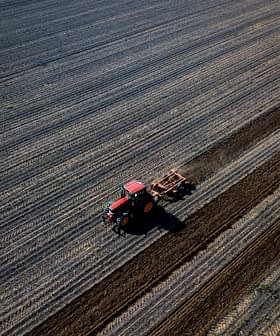California’s Wet Winter Leaves Groves Susceptible to Disease, Waterlogging

The El Niño cycle bringing wet weather to California is one of the strongest such cycles on record, according to researchers from the University of California – Los Angeles (UCLA).
Their assertions are corroborated by the National Oceanic and Atmospheric Administration’s climate prediction center, which also reported a 62 percent chance El Niño would continue from April through June with historically strong conditions early in the year.
The total amount of rain in a year is not the most important factor for Phytophthora or waterlogging in an orchard; more important is the duration of standing water in the orchard
Record-shattering rains poured over sections of California this week, with rainfall totals as high as ten inches (25 centimeters), bringing widespread flash floods. As atmospheric rivers pound California, olive growers face the challenge of potential diseases and problems that may ensue.
“From my understanding, we are a bit under average for rainfall so far, though February is predicted to be wet,” Jaime Ott, an orchards system advisor for Northern California at the University of California Cooperative Extension, told Olive Oil Times.
See Also:Controlling Black Scale in California GrovesStill, California olive growers are concerned about widespread wetness resulting in Phytophthora and waterlogging. Excessive water – caused by rain, flooding or overirrigation – presents an ongoing challenge for olive orchards.
Phytophthora is a common parasite that causes root and root crown rot in olive trees. The mold species – responsible for the potato blight that caused the Great Famine of Ireland – takes advantage of saturated soil conditions.
Trunk infections can lead to poor vigor, leaf yellowing and sudden tree collapse or death. Cultural practices that avoid prolonged and frequent soil saturation can help minimize disease losses.
“The Phytophthora infection is caused by an aggressive pathogen which may be present in water or soil and which infects trees by traveling through water in the soil,” Ott said.
“It causes roots to die and can cause dead tissue, called a canker, on the crown or trunk,” she added. “Basically, the roots drown and die, and the plant declines because it can no longer take water up through the dead roots.”
Meanwhile, waterlogging is a physiological problem when the top two feet (60 centimeters) of a tree’s root zone is saturated with water for an extended period. Waterlogging can result in leaf yellowing, poor vigor, defoliation and possibly tree death.
“The total amount of rain in a year is not the most important factor for Phytophthora or waterlogging in an orchard; more important is the duration of standing water in the orchard,” Ott said.
Standing water is influenced by the amount and duration of rainfall, soil drainage conditions, water penetration ability and culvert or ditch maintenance quality.
“My understanding is that olives are susceptible to both infection by Phytophthora species and damage from waterlogging, though I don’t think Phytophthora is considered a major disease of olives,” Ott said.
While Phytophthora and waterlogging are separate problems, their symptoms are very similar, and they can be challenging to tell apart when examining an unhealthy tree.
“If a tree is in standing water or water-saturated soil, it can be affected by Phytophthora, waterlogging, or both,” Ott said. “Careful soil water management is the best foundation for control of Phytophthora root and crown rot.”
Once the tree is infected with Phytophthora, the symptoms can progress even without excess water. However, waterlogging symptoms typically improve once excess water is gone.
Cultural practices that avoid prolonged and frequent soil saturation, especially near the tree root crowns (where the trunk begins), help minimize losses.
The University of California’s integrated pest management program recommends planting trees on berms, shortening irrigation times and improving soil water penetration and drainage to reduce losses caused by Phytophthora.
They additionally advise not to place irrigation equipment too close to the trunk of trees; the goal is to provide accessible water to the root system without overwetting the soil around the root crown.
The University of California also recommends that growers avoid planting olive trees in low areas and heavy clay soils.
“I would add that it’s worth checking the drainage ditches around your orchard and making sure they are clear and can move water effectively away from it,” Ott said.
She advised that orchard planning is critical for people and companies planning to plant new olive trees.
“Our best prediction is that the weather will become more variable and extreme in the future: droughts will be more severe, and wet winters will be wetter, and we are more likely to ‘yo-yo’ between too wet and too dry, with very little just right,” Ott said.
“Plan your orchard accordingly: plant on berms to get your trees up above potential flooding, maintain vegetation on your orchard floor to improve water penetration and reduce runoff and erosion during heavy rain,” she added.
“Keep in mind that Phytophthora and waterlogging are two distinct problems,” Ott concluded. “Do what you can to design around extreme weather so you aren’t scrambling when it happens.”








